Perhaps the commonest of all the lovely clan east of the Mississippi, or throughout a range extending from Arizona and Florida northward to British Columbia and New Brunswick, is the CANADA GOLDENROD or YELLOW-WEED (S.Canadensis).Surely everyone must be familiar with the large, spreading, dense-flowered panicle, with recurved sprays, that crowns a rough, hairy stem sometimes eight feet tall, or again only two feet.Its lance-shaped, acutely pointed, triple-nerved leaves are rough, and the lower ones saw-edged.From August to November one cannot fail to find it blooming in dry soil.
Most brilliantly colored of its tribe is the low-growing GRAY or FIELD GOLDENROD or DYER'S WEED (S.nemoralis).The rich, deep yellow of its little spreading, recurved, and usually one-sided panicles is admirably set off by the ashy gray, or often cottony, stem, and the hoary, grayish-green leaves in the open, sterile places where they arise from July to November.Quebec and the Northwest Territory to the Gulf States.
No longer classed as a true Solidago, but the type of a distinct genus, the LANCE-LEAVED, BUSHY, or FRAGRANT GOLDENROD (Euthamia graminifolia; formerly S.lanceolata) lifts its flat-topped, tansy-like, fragrant clusters of flower-heads from two to four feet above moist ground.From July to September it transforms whole riverbanks, low fields, and roadsides into a veritable El Dorado.Its numerous leaves are very narrow, lance-shaped, triple or five nerved, uncut, sometimes with a few resinous dots.Range, from New Brunswick to the Gulf, and westward to Nebraska.
"Along the roadside, like the flowers of gold That tawny Incas for their gardens wrought, Heavy with sunshine droops the goldenrod."Bewildered by the multitude of species, and wondering at the enormous number of representatives of many of them, we cannot but inquire into the cause of such triumphal conquest of a continent by a single genus.Much is explained simply in the statement that goldenrods belong to the vast order of Compositae, flowers in reality made up sometimes of hundreds of minute florets united into a far-advanced socialistic community having for its motto, "In union there is strength." (See Daisy) In the first place, such an association of florets makes a far more conspicuous advertisement than a single flower, one that can be seen by insects at a great distance; for most of the composite plants live in large colonies, each plant, as well as each floret, helping the others in attracting their benefactors' attention.
The facility with which insects are enabled to collect both pollen and nectar makes the goldenrods exceedingly popular restaurants.Finally, the visits of.insects are more likely to prove effectual, because any one that alights must touch several or many florets, and cross-pollinate them simply by crawling over a head.The disk florets mostly contain both stamens and pistil, while the ray florets in one series are all male.Immense numbers of wasps, hornets, bees, flies, beetles, and "bugs" feast without effort here indeed, the budding entomologist might form a large collection of Hymenoptera, Diptera, Coleoptera, and Hemiptera from among the.visitors to a single field of goldenrod alone.
Usually to be discovered among the throng are the velvety black Lytta or Cantharis, that impostor wasp-beetle, the black and yellow wavy-banded, red-legged locust-tree borer, and the painted Clytus, banded with yellow and sable, squeaking contentedly as he gnaws the florets that feed him.
Where the slender, brown, plume-tipped wands etch their charming outline above the snow-covered fields, how the sparrows, finches, buntings, and juncos love to congregate, of course helping to scatter the seeds to the wind while satisfying their hunger on the swaying, down-curved stalks.Now that the leaves are gone, some of the goldenrod stems are seen to bulge as if a tiny ball were concealed under the bark.In spring a little winged tenant, a fly, will emerge from the gall that has been his cradle all winter.
ELECAMPANE; HORSEHEAL; YELLOW STARWORT
(Inula Helenium) Thistle family Flower-heads - Large, yellow, solitary or a few, 2 to 4 in.
across; on long, stout peduncles; the scaly green involucre nearly 1 in.high, holding disk florets surrounded by a fringe of long, very narrow, 3-toothed ray florets.Stem: Usually unbranched, 2 to 6 ft.high, hairy above.Leaves: Alternate, large, broadly oblong, pointed, saw-edged, rough above, woolly beneath some with heart-shaped, clasping bases.
Preferred Habitat - Roadsides, fields, fence rows, damp pastures.
Flowering Season - July-September.
Distribution - Nova Scotia to the Carolinas, and westward to Minnesota and Missouri.















